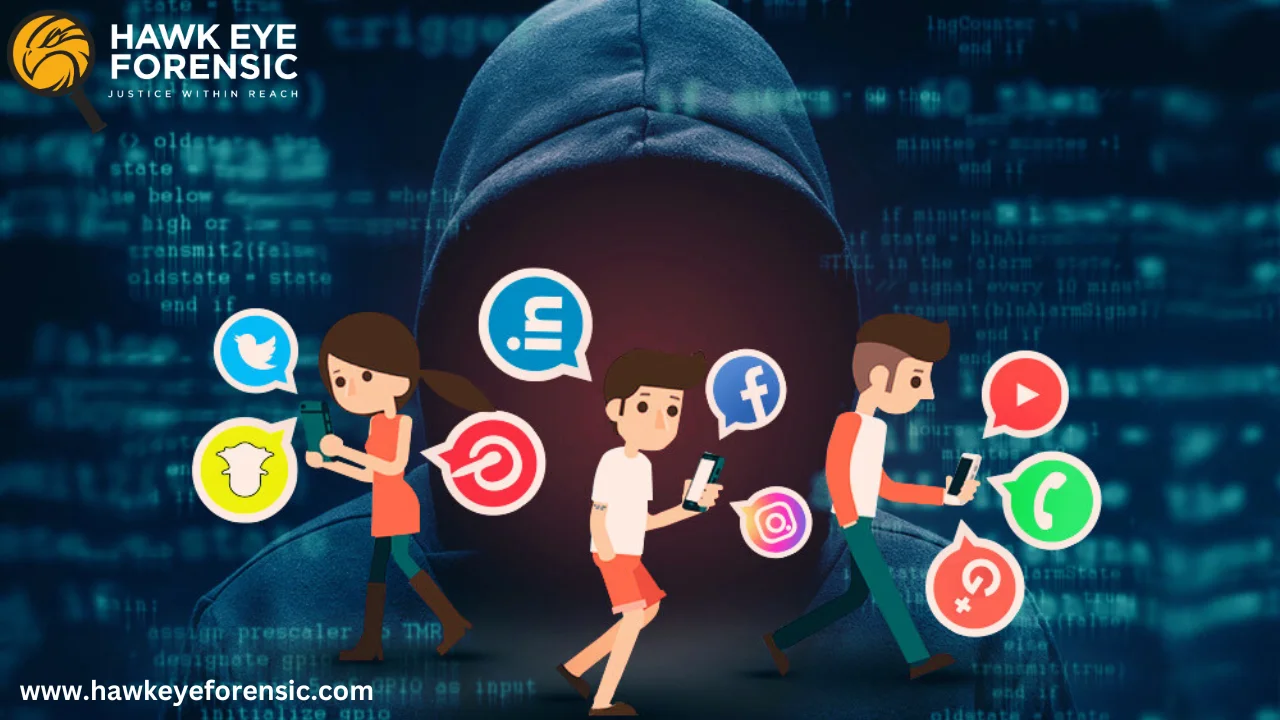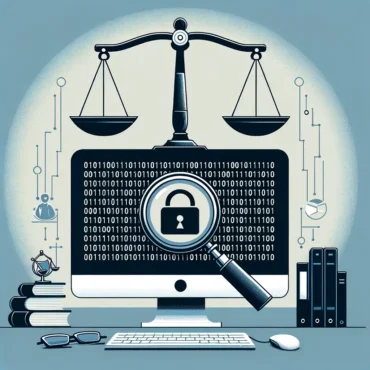Introduction
In today’s interconnected world, social media has become a dominant force shaping communication, business, and personal relationships. Platforms like Facebook, Instagram, X (formerly Twitter), WhatsApp, and LinkedIn generate massive amounts of data every second. While this digital ecosystem facilitates instant sharing and engagement, it also provides fertile ground for cybercrimes such as identity theft, harassment, misinformation, fraud, and data breaches.
>This is where cyber forensics steps in—serving as a critical tool in uncovering digital evidence, tracing criminal activity, and maintaining digital accountability in the complex world of social media.
The Intersection of Cyber Forensics and Social Media
Cyber forensics, a branch of digital forensics, involves collecting, analysing, and preserving electronic evidence from digital devices and online platforms. When applied to social media, it focuses on investigating user activities, interactions, and content across various platforms to establish digital trails that can support criminal, civil, or corporate investigations.
Unlike traditional data storage, social media data is dynamic and distributed—posts can be edited, deleted, or hidden; accounts can be cloned or compromised; and conversations often span multiple applications. Hence, forensic experts require advanced techniques and specialised tools to accurately and legally extract and analyse such volatile data.
Common Crimes Investigated Through Social Media Forensics
-
Cyberbullying and Online Harassment
With anonymity and global reach, social media is a hotspot for cyberbullying, threats, defamation, and stalking. Forensic experts analyze messages, comments, chat logs, and timestamps to trace the origin of abusive content and identify the perpetrators.
-
Identity Theft and Impersonation
Fake profiles and cloned accounts are used to deceive users, scam individuals, or damage reputations. Forensic examiners can detect inconsistencies in metadata, IP logs, and behavioral patterns to authenticate accounts and track fraudsters.
-
Fraud and Phishing Scams
Many cybercriminals use social media to lure victims into scams involving financial fraud, fake job offers, or investment schemes. Investigators examine communication records, URLs, and image metadata to uncover the sources and map the digital trail of the crime.
-
Defamation and Misinformation
Social media plays a massive role in spreading fake news and defamatory content. Through digital forensic analysis, investigators can establish the origin of a post, determine its authenticity, and preserve it as evidence before it is deleted or altered.
-
Corporate Espionage and Data Leakage
Employees leaking confidential data or trade secrets through personal social media accounts is an increasing concern. Social media forensics helps companies identify insider threats, monitor data breaches, and ensure compliance with cybersecurity policies.
Forensic Techniques Used in Social Media Investigations
-
Metadata Analysis
Every post, image, or video uploaded on social media contains metadata—information such as timestamps, device IDs, and geolocation. Extracting and analyzing metadata can help forensic analysts trace the source, verify authenticity, and determine the timeline of digital events.
-
Network and Connection Mapping
By examining followers, friends, tags, and group memberships, forensic experts can map social connections and identify potential accomplices or links between suspects.
-
Hashtag and Keyword Tracking
Investigators use keyword monitoring tools to track online discussions related to specific topics or individuals. This helps in identifying coordinated misinformation campaigns or criminal planning.
-
Image and Video Forensics
Multimedia content often plays a central role in social media investigations. Using tools like Amped Authenticate, Cognitech, or Forensically, experts detect tampering, perform reverse image searches, and verify the originality of visual evidence.
-
Open Source Intelligence (OSINT)
OSINT techniques help forensic experts gather publicly available data from open platforms. By combining OSINT with digital forensic analysis, investigators can uncover hidden connections, digital footprints, and behavioral patterns of suspects.
-
Account Recovery and Log Analysis
Accessing deleted or hidden messages often involves retrieving backup data, analyzing session logs, and working with platform providers through legal channels to obtain records.
Challenges in Social Media Forensics
-
Data Volume and Volatility
The sheer amount of social media data and its rapidly changing nature make it challenging to collect and preserve digital evidence before it disappears.
-
Encryption and Privacy Controls
Many social platforms use end-to-end encryption or privacy settings that restrict access to user data. This often requires legal authorization and technical expertise to retrieve evidence.
-
Jurisdictional Issues
Since servers may be located in different countries, cross-border investigations face legal hurdles related to data access and admissibility in court.
-
Anonymity and Fake Accounts
The ability to create multiple accounts or use VPNs complicates the process of verifying digital identities and tracing the actual source of malicious activity.
-
Legal Admissibility
Forensic evidence from social media must follow strict legal and ethical protocols to be admissible in court. Improper data collection or analysis can lead to rejection of evidence.
Tools Used in Social Media Forensics
Some commonly used tools in social media investigations include:
-
Magnet AXIOM – Extracts data from apps like Facebook, WhatsApp, and Instagram.
-
Cellebrite UFED – Recovers social media data from mobile devices, including deleted content.
-
Maltego – Used for link analysis and mapping online relationships.
-
Belkasoft Evidence Centre – Gathers data from chats, browsers, and cloud platforms.
These tools ensure forensic integrity while helping investigators visualise complex data patterns.
Legal and Ethical Considerations
Social media forensic investigations must comply with data protection laws, such as the Information Technology Act (India), GDPR (Europe), and CCPA (California). Investigators should ensure:
-
Proper chain of custody for digital evidence
-
Non-intrusive data collection respecting user privacy
-
Use of authentic and court-admissible forensic tools
-
Documentation and reporting of every step during evidence handling
Balancing privacy rights with investigative needs remains one of the most debated aspects of social media forensics.
Future of Social Media Forensics
As social media evolves, forensic science must adapt. The future lies in:
-
AI and Machine Learning for detecting deepfakes, fake accounts, and sentiment analysis.
-
Blockchain-based evidence validation to maintain authenticity and traceability.
-
Automated forensic tools for handling massive data volumes efficiently.
-
Cross-platform collaboration between law enforcement agencies and social media companies.
With the increasing use of ephemeral content and encrypted messaging apps, forensic experts must stay updated with new methodologies to ensure justice in the digital realm.
Conclusion
In the age of social media, digital evidence has become both abundant and elusive. Cyber forensics bridges the gap between online activity and real-world accountability. By employing scientific methods, ethical practices, and advanced tools, forensic experts can reveal the truth behind screens—helping law enforcement, corporations, and individuals maintain trust and integrity in the digital era.
>As social media continues to shape modern society, cyber forensics will remain the key to ensuring that technology serves justice, not chaos.





Post comments (0)